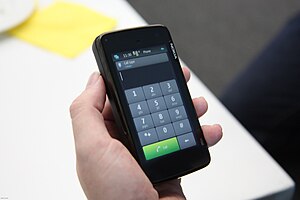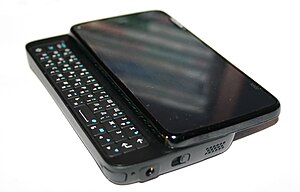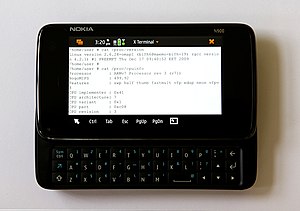OK I’ll buy one.
Best to be clear about that from the start. After viewing today’s IFA Berlin presentation, I’m already planning to push substantial amounts of money onto the nice Korean people. So anything I say from here on cannot be regarded as truly neutral. Spectacles set to rose.
That being acknowledged, let me tell you why I want to spend excessive money on this excessive device.
The Galaxy Note has quite literally been my constant companion for the last three years. I bought the original one the day it went on sale in Ireland, used it in countless ways for both work and play. I’ve watched it grow year on year – the more refined Note II, the seriously powerful Note III – and with each new model, I have…
Stuck with the original. Though every iteration was more desirable than the last, it would not have been genuinely more useful. Not enough to justify starting another long and expensive contract anyway. The industry may love conspicuous consumers, but for most real customers a phone of this quality is a long-term investment.
And with the Note 4, the time may have come to begin again.
I don’t claim to be overwhelmed. Not a single one of the wilder rumours panned out. The Note 4 has a powerful 3GB of RAM, but not a revolutionary 4GB. Standard storage is still only 32GB instead of 64. Even the S4’s weatherproofing, considered almost a given by the rumour mill and greatly to be desired on such an expensive device, doesn’t seem to have materialised. On the other hand, we can be glad that some of the legends did not come to pass. Foldable AMOLED screens are an exciting technology with many possible applications, but would you really want to write on one? And though part of me would love to see the screen size creep up to 6” and beyond, it’s probably best to call a halt at 5.7”. A phone has to fit in pockets.
Rumours and wishful thinking aside, the Note 4 lives up to expectations. Specifications have been enhanced by respectable margins pretty much across the board, and there are a few highly significant improvements like high-speed charging and an ultra-low power mode that can keep it ticking over for a fortnight. Also the ghost of plasticky tackiness seems finally to be exorcised, with a slender metal rim and grippy leather-look back (now without the questionable faux stitching) lending it the air of a precision instrument like a classic SLR camera. At last the looks live up to its cost and quality.
If the Note 4 lacks anything it is one knock-down new feature to get excited about, but perhaps this is not surprising considering the nature of the beast. We’re long past the early days of the iPhone when each year’s model brought another feature that had obviously been missing. The Note already does about everything any other phone does, plus a lot of other things as well, all while pushing the form factor to its limits. Therefore Samsung tends to add its most experimental technology not to the flagship device itself, but to a special edition.
That bill is consummately filled this time by the Edge version with its cute auxiliary interface down one side. It’s an interesting and useful enhancement, but I’m not sure if this special-model strategy is paying off for Samsung. No doubt they worry that adding a controversial feature could raise costs while actually reducing the phone’s potential market, but I think if they’d been daring enough to put the edge display on the standard version it would have made the phone grab attention everywhere it was seen in use. Though it’s a cool extra, I can’t see myself paying extra for a version that has it. Indeed I’ll be a little surprised if any carrier even gives me the option.
The other way Samsung “adds” features of course is by offering new peripherals to integrate with. This time we see a bigger and better Gear watch, which I like but am neither rich nor ostentatious enough to buy. More excitingly, collaboration with Oculus brings a Gear VR headset – simply slot the Note 4 into a pair of goggles and you’re in another world. A technological tour de force by any standard and a sure headline-grabber, but not a reason for me to buy.
What does it for me is the solid improvements to the features I use regularly. More than once I’ve upgraded a phone basically to get a better camera, and with 16MP and real optical image stabilization, the Note 4’s is streets ahead of the original’s (already excellent) 8MP offering. And with a resolution breaking 500 pixels per inch and super AMOLED colour and contrast, its screen outclasses not just the fine precedent of the original, but every display available today.
Of most importance to me though are the enhancements to the Note’s core differentiation – the S Pen. This may mean little to anyone except artists, but there will now be interchangeable tips to adjust the pen-on-paper feel. Best of all the new pen will have 2048 levels of pressure sensitivity, the equal of professional graphics tablets. Do you really need that many levels to draw and annotate? No – but on the other hand you can never get too much sensitivity. The more nuance a pen is alive to, the more realistic the feel and the results.
I can’t see owners of the Note III rushing out to buy this, unless they are either blessed with excess wealth or cursed to own the most expensive phone available at any given moment. To them it would be only an incremental upgrade. For those of us who still have the Note or Note II however, decision time has come. And maybe it’s time for you too, if you haven’t yet sampled the delights of a device that, besides being everything a smartphone can be, is also a fine notebook and sketchpad.
The original Galaxy Note was a hard act to follow, so much so that it has taken three generations of enhancement to truly leave clear water. But a significantly better pen and camera make the Note 4 a significantly more useful tool.








